Discovering that your comfortable mattress might contain fiberglass can be unsettling. This material, often used as a fire retardant in affordable mattresses, can pose health risks if the fibers escape and contaminate your home. Understanding how to identify its presence is the first step toward ensuring a safe and healthy sleeping environment for you and your family.
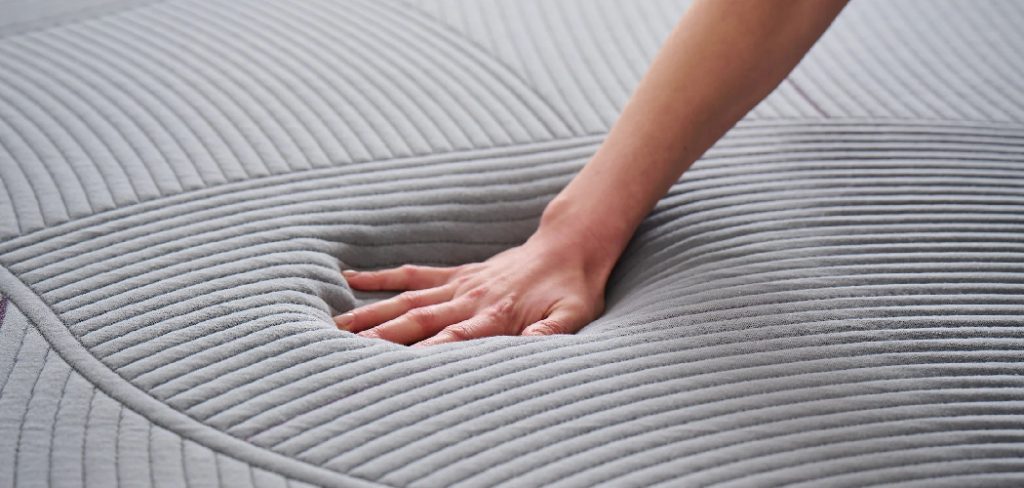
This guide on how to tell if mattress has fiberglass will walk you through a detailed, step-by-step process to determine if your mattress contains fiberglass. We will cover everything from reading the label to performing a physical inspection, empowering you with the knowledge to make informed decisions about your bedding. By following these instructions, you can confidently check your mattress and take the necessary precautions.
Tools and Materials You’ll Need:
- Bright flashlight (preferably LED)
- Magnifying glass
- Protective gloves
- Face mask (N95 or higher recommended)
- Protective eyewear or goggles
- Duct tape or strong adhesive tape
- Smartphone or camera with a good zoom function
8 Simple Step-by-step Guidelines on How to Tell if Mattress Has Fiberglass
Step 1: Inspect the Mattress Label
The most straightforward method to begin your investigation is by carefully examining the mattress label. Manufacturers are legally required to disclose the materials used in their products, especially those related to fire safety standards. Look for a white tag, usually sewn into the seam at the head or foot of the mattress, which contains detailed information about its composition. Scan this tag for specific terms like “glass fiber,” “glass wool,” or simply “fiberglass.” Manufacturers might sometimes use less direct phrasing, so also look for phrases like “silica” or “glass-reinforced plastic,” which can indicate the presence of fiberglass. Be thorough in your reading, as this information is often printed in very small font and may be buried among other material details.
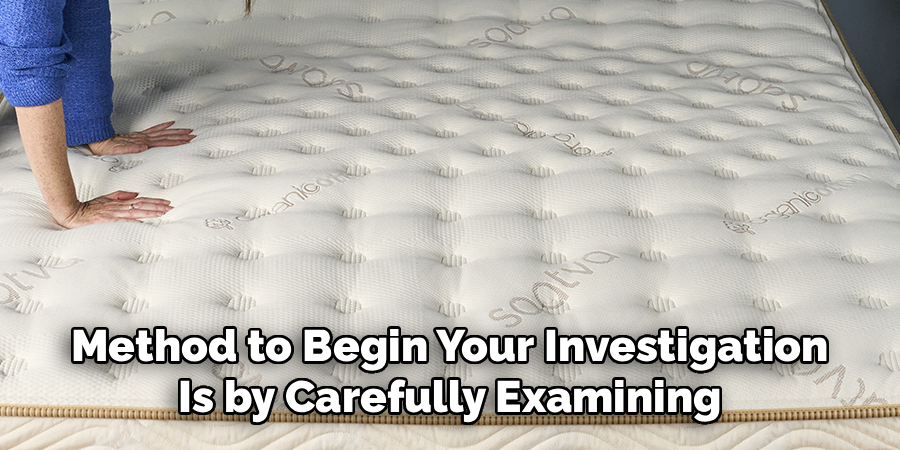
Pay close attention to any warnings or instructions provided on the label. A key indicator of a fiberglass mattress is a prominent warning that states “Do Not Remove Cover.” This instruction is not merely a suggestion to protect the mattress from spills; it’s a critical safety measure designed to contain the fiberglass layer. Removing the cover can release countless tiny glass shards into your home, leading to skin irritation, respiratory issues, and extensive, costly cleanup. If you see this warning, it is a very strong sign that the inner layers of the mattress contain fiberglass, and you should proceed with extreme caution, avoiding any actions that could compromise the integrity of the outer fabric.
Step 2: Research the Manufacturer and Model
If the mattress label is missing, illegible, or unclear, your next step is to conduct online research. Start by identifying the brand and model name of your mattress, which is often printed or embroidered on the side or top surface. Once you have this information, perform a detailed internet search using queries like “[Mattress Brand] [Model Name] materials” or “[Mattress Brand] fiberglass.” Visit the manufacturer’s official website and look for the product page for your specific model. Reputable companies typically provide a detailed breakdown of the layers and materials used in their mattresses, including the type of fire barrier they employ.
In addition to the manufacturer’s site, search for independent reviews, customer complaints, and forum discussions related to your mattress model. Websites like Reddit, consumer advocacy forums, and mattress review sites can be valuable sources of information. Other customers may have already investigated the presence of fiberglass and shared their findings, photos, or even correspondence with the manufacturer. Look for discussions where users mention skin irritation, glitter-like dust, or breathing problems associated with their mattress, as these are common complaints when fiberglass has been released. This collective user experience can provide crucial clues that you might not find through official channels alone.
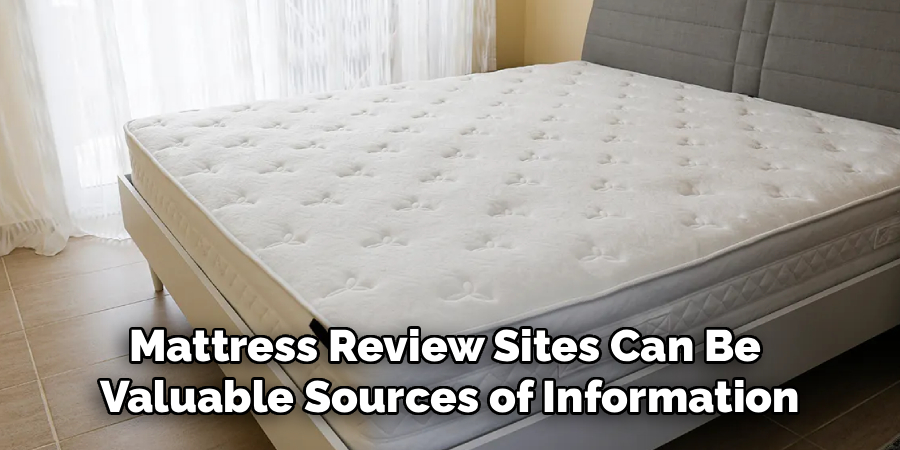
Step 3: Check for a Non-Removable Cover
The design of the mattress cover itself can offer significant clues about its contents. Mattresses that contain fiberglass almost always feature a cover that is intentionally designed to be non-removable. Examine the mattress cover closely for the presence of a zipper. If you find a zipper, assess its design. A zipper on a fiberglass-free mattress, such as one with a machine-washable cover, will typically have a standard, easy-to-grasp pull tab. However, on a mattress containing fiberglass, the zipper often lacks a pull tab, making it difficult or impossible to open without using a tool like pliers. This is a deliberate safety feature intended to discourage you from opening it.
Furthermore, inspect the seams and stitching around the entire mattress. A non-removable cover is usually sewn shut with heavy-duty thread, and there will be no obvious or easy way to open it without cutting or tearing the fabric. You might also find tags explicitly warning against removal, as mentioned in the first step. The entire construction is meant to permanently encase the inner layers. If your mattress cover feels seamlessly integrated and lacks any functional opening mechanism, it is highly probable that it is designed to contain a hazardous material like fiberglass, and you should not attempt to force it open under any circumstances.
Step 4: Perform a Visual Inspection with a Flashlight
For this step, you will need your protective gear, including gloves, a mask, and eyewear. Move the mattress to a well-lit area or use a powerful flashlight to closely examine its surface. Shine the light at a low angle across the fabric. Fiberglass particles are transparent and have a distinct shimmer, similar to glitter. By holding the light nearly parallel to the mattress surface, you can catch the reflection of any fibers that may have started to work their way through the cover. Pay special attention to the seams, corners, and any areas that show signs of wear and tear, as these are the most likely points of escape.
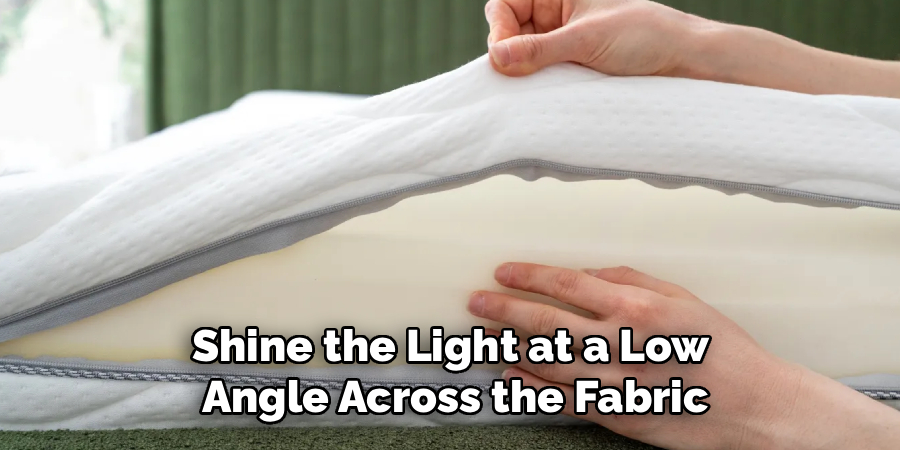
Look for tiny, shiny specks or thin, hair-like strands that glint when the light hits them. It can be helpful to do this in a darkened room with the flashlight as your only light source, which will make the reflective fibers stand out more dramatically against the fabric. Scan the entire surface, including the sides and bottom of the mattress. Also, inspect the area immediately surrounding the mattress, such as the box spring, bed frame, and the floor underneath. If fiberglass has been leaking, you will likely find a fine dusting of these glittery particles in the vicinity, which is a definitive sign of contamination.
Step 5: Conduct the Duct Tape Test
The duct tape test is a more direct method for capturing potential fiberglass particles from the mattress surface. Put on your protective gloves and mask before you begin. Take a strip of strong adhesive tape, like duct tape, and press it firmly onto a small section of the mattress. It is best to choose an area that appears worn or where you suspect fibers might be escaping, such as along a seam or tuft. Rub your hand over the back of the tape to ensure it makes solid contact with the fabric. Then, carefully and slowly peel the tape off the mattress.
Once the tape is removed, take it to a well-lit area or use your flashlight and magnifying glass to inspect its sticky side. Examine the tape closely for any embedded fibers that sparkle or shine under the light. Fiberglass strands will look like tiny, sharp shards of glass or very thin, transparent hairs stuck to the adhesive. Compare what you see to images of fiberglass online to confirm your findings. If the tape comes away with numerous shiny particles, it is a strong confirmation that your mattress contains fiberglass that is beginning to leak through the cover.
Step 6: Feel the Mattress Surface (with Caution)
This step requires extreme caution and should only be performed while wearing protective gloves. Do not use your bare hands, as direct contact with fiberglass can cause painful skin irritation, rashes, and small cuts. With your gloves on, gently run your hands over the entire surface of the mattress. Be methodical and cover the top, sides, and any quilted or tufted areas. You are feeling for any unusual textures or sensations. A mattress containing fiberglass might feel slightly gritty or prickly in certain spots, even through the fabric cover. This could be a sign that the inner fiberglass sock is breaking down and its fibers are starting to poke through.
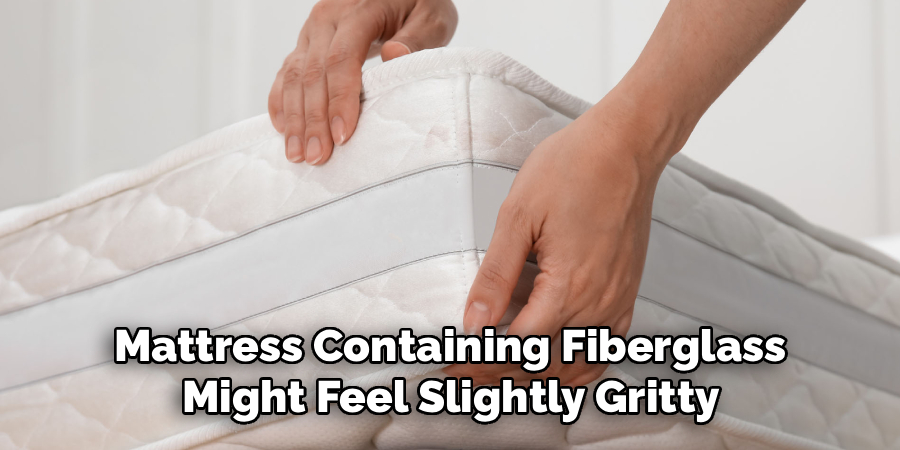
Pay attention to any sharp, pin-like sensations. If you feel anything that pricks your gloved fingers, stop immediately. This is a very strong indicator that fiberglass strands are protruding from the mattress cover. You might not see them with the naked eye, but the tactile feedback can be undeniable. Remember, the purpose of this test is not to apply heavy pressure but to lightly and sensitively detect irregularities. If you feel any sharp points, you can be almost certain that the fire barrier is made of fiberglass and its integrity has been compromised.
Step 7: Examine the Mattress Foundation and Surrounding Area
Fiberglass particles are lightweight and can easily become airborne, settling on surfaces throughout the room. A thorough inspection of the area around your mattress is a crucial step in confirming a leak. Using your flashlight, carefully examine the box spring or foundation directly underneath the mattress. Look for a fine layer of dust that seems to sparkle or glitter under the light. These particles can accumulate in the crevices of the bed frame, on the slats, and on the fabric of the box spring. Check the floor around and under the bed, including along baseboards and in corners where dust tends to gather.
In addition to the immediate bed area, expand your search to nearby furniture. Check the surfaces of nightstands, dressers, and even curtains or blinds. If a significant fiberglass leak has occurred, the particles may have been circulated by airflow from vents or fans, contaminating a wider area. You may also notice that your skin feels itchy or irritated after spending time in the bedroom, or you may experience unexplained respiratory symptoms. Finding this shiny dust on multiple surfaces is compelling evidence that your mattress is the source of fiberglass contamination.
Step 8: Look for Wear and Tear
The risk of fiberglass exposure increases significantly as a mattress ages and shows signs of wear and tear. Conduct a detailed visual inspection of the entire mattress, specifically looking for any breaches in the outer cover. Check for rips, holes, tears, or split seams. Pay close attention to the corners and edges, which are high-friction areas and tend to wear out first. Any opening, no matter how small, is a potential escape route for fiberglass particles. Also, inspect the areas where the mattress is tufted or quilted, as the stitching in these spots can break over time, creating weak points in the cover.
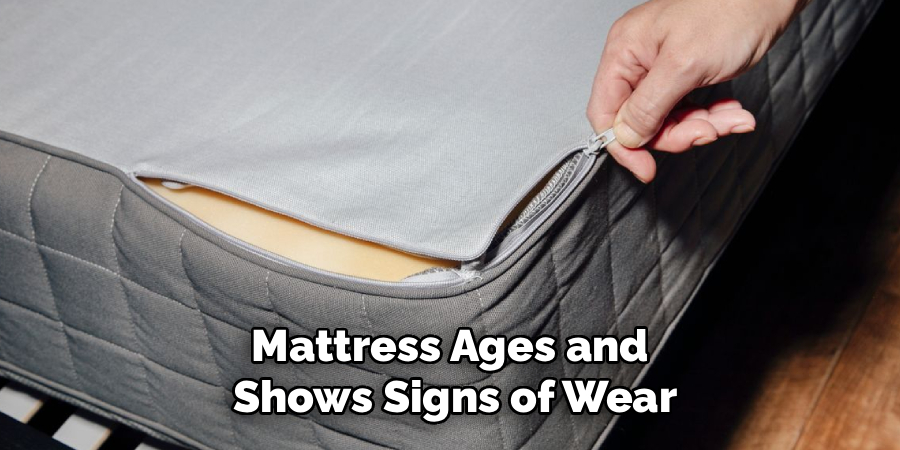
If you have an older mattress that has been sagging or developing lumps, this can also be a warning sign. The internal breakdown of foam and other support layers can put stress on the inner fiberglass fire sock, causing it to tear and release fibers. These fibers can then more easily penetrate a worn or thinning outer cover. If you identify any significant damage to the mattress cover, you should assume that the fiberglass layer is compromised and take immediate action to safely remove and replace the mattress to prevent further contamination of your home environment.
Following these steps on how to tell if mattress has fiberglass, you can ensure the safety and cleanliness of your sleep environment. Regularly checking for any signs of damage to your mattress cover is crucial, as well as being cautious when handling and disposing of a damaged mattress. By taking these precautions, you can maintain a healthy and comfortable sleep environment for yourself and your loved ones.
Frequently Asked Questions
Q1: How Can I Tell if My Mattress Has Fiberglass Without Opening It?
A1: You can tell if your mattress has fiberglass without opening it by checking the law tag for material disclosures like “glass fiber” and looking for a prominent “Do Not Remove Cover” warning. Additionally, you can research the mattress brand and model online to find its material composition. Performing a visual inspection with a flashlight at a low angle may reveal shiny, glitter-like fibers on the surface. Finally, the duct tape test—pressing strong tape against the fabric and examining it for sparkling particles—can confirm the presence of fiberglass that has started to leak.
Q2: What Words Mean Fiberglass on a Mattress Tag?
A2: On a mattress tag, several terms can indicate the presence of fiberglass. The most direct terms are “fiberglass,” “glass fiber,” and “glass wool.” However, manufacturers may use less common or more technical phrasing. Be on the lookout for words like “silica,” “silicon dioxide,” or “glass-reinforced plastic.” Any mention of “glass” in the materials list, especially in the context of the fire barrier or “FR layer,” should be treated as a strong indicator that the mattress contains fiberglass.
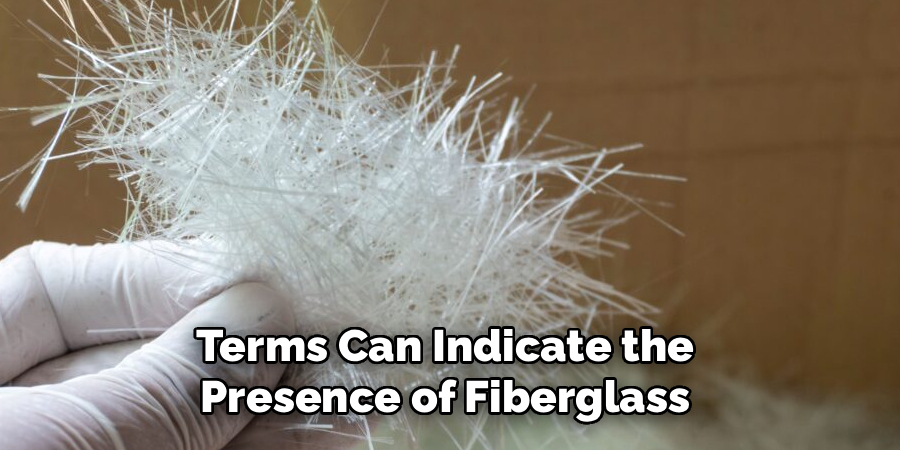
Q3: Is It Illegal for a Mattress to Have Fiberglass?
A3: No, it is not illegal for mattresses to contain fiberglass. Fiberglass is a low-cost material that allows manufacturers to meet the federal flammability standards (16 CFR Part 1633) required for all mattresses sold in the United States. While its use is legal, the concern lies in the potential for the fibers to escape if the mattress cover is removed or becomes damaged. Reputable manufacturers are moving away from fiberglass in favor of safer alternatives, but it remains common in many budget-friendly mattresses.
Q4: What Should I Do if My Mattress Has Fiberglass?
A4: If you confirm your mattress has fiberglass, the most important rule is to never remove the cover. If the mattress is in good condition with no tears or signs of leaking fibers, you can continue to use it, but consider enclosing it in a high-quality, waterproof, and bite-proof mattress encasement for an extra layer of protection. If you find evidence of a fiberglass leak (shiny particles around the room, skin irritation), you must take immediate steps to safely remove and dispose of the mattress according to your local waste management guidelines. This should be followed by a thorough, professional cleanup of your home to remove all contaminated particles.

Conclusion
Identifying whether your mattress contains fiberglass is a critical step in safeguarding your home and health. By carefully inspecting the mattress label, researching the model, examining the cover, and looking for physical evidence like shiny fibers, you can make an educated assessment. The presence of a “Do Not Remove Cover” warning is one of the strongest indicators of an internal fiberglass layer.
If you discover fiberglass, especially if it is leaking, taking prompt and proper action is essential. Protecting the mattress with a durable encasement can be a temporary solution for an intact mattress, but replacement is the safest long-term option. Prioritizing a safe sleeping environment free from potential irritants ensures peace of mind and contributes to the overall well-being of your household. Thanks for reading this guide on how to tell if mattress has fiberglass.
About
Construct Fixes is a distinguished figure in the world of Diy design, with a decade of expertise creating innovative and sustainable Diy solutions.
His professional focus lies in merging traditional craftsmanship with modern manufacturing techniques,
fostering designs that are both practical and environmentally conscious. As the author of diy,
constructfixes delves into the art and science of construction-making, inspiring artisans and industry professionals alike.
Education RMIT University
(Melbourne, Australia) Associate Degree in Design (Construct Fixes) Focus on sustainable design, industry-driven projects,
and practical craftsmanship. Gained hands-on experience with traditional and digital manufacturing tools, such as CAD and CNC software.
Nottingham Trent University
(United Kingdom) Bachelor’s in constructfixes.com and Product Design (Honors) Specialized in product design with a focus on blending creativity with production
techniques. Participated in industry projects, working with companies like John Lewis and Vitsoe to gain real-world insights.
Publications and Impact
In diy, Construct Fixes his insights on indoor design processes, materials, and strategies for efficient production.
His writing bridges the gap between artisan knowledge and modern industry needs, making it a must-read for both budding designers and seasoned professionals.
